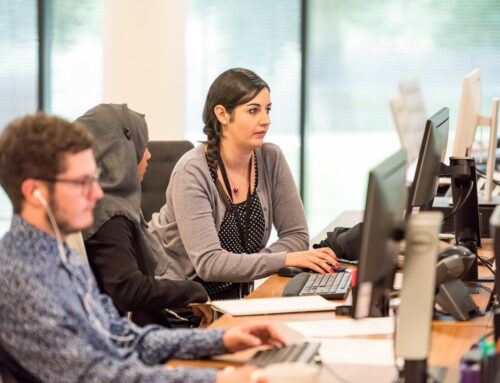Whether putting together a new team or rebuilding an existing one, the people you put into it are crucial in more ways than one. Good teams rely on a combination of factors to succeed, including a range of skills covering everything the team needs to achieve, adaptability, a sense of trust, and the ability to work well together.
This often means choosing people who work in similar ways, who balance each other out, and who are able to effectively communicate on the same level. For example, if you were to take a software engineer who excels at working alone and taking on most of the work, he might not do very well in a team requiring strict collaboration and interplay of ideas. Data from employee assessment and frameworks as well as emotional intelligence can help you to make the right decisions to create great teams.
Identify What’s Actually Needed for a Team
Creating a new team means identifying what the team should be doing, defining their scope, and then planning the team around that. This also means identifying workload, potential key players, and work environment.
You can use this to determine what is required in terms of skills, time management, prioritization, efficiency and speed, creativity, adaptability, willingness to learn, and collaboration. You can also use it to determine which types of people will excel on this team. If you’re building a slow-moving team that’s largely responsible for keeping everything running well, you know that highly creative workaholics are not the ideal fit for that team, they’ll quickly become bored and look for work elsewhere.
Identify Key Roles and Players in the Team
It’s extremely valuable to identify the core needs of your team first. This allows you to build your team around those people, so that you choose key roles and learn what they need in terms of communication, collaboration, and environment. Even if you’re hiring externally, it’s a good idea to know who you’re building the team around.
Let’s say you’re creating a new UX team. You need a senior UX designer in the lead role and everyone else in the team is there to support them. It’s important that you be able to design that team around their specific needs.
- How do your key players communicate?
- How emotionally intelligent are they?
- What kind of guidance do they need?
- What are their strengths?
- What are their weaknesses that could benefit from augmentation?
- What do they need?
Building a Team Based on Common Ground
Marcia Hughes, president of Collaborative Growth, identifies 7 key skills or behaviors individuals must have to work successfully together in a team. These include motivation, identity, emotional awareness, communication, conflict resolution, stress tolerance, and positive mood.
If you create a group of people with similar results on each of these points, they will be able to work together much more easily and productively. Someone who is significantly lower energy or more prone to stress than other members of his or her team will not excel in that team. While building these specific skills often requires significant time investment and training, you can do so internally when planning a team over the long-term. At the same time, you do have to mix people with higher and lower levels of motivation to avoid putting everyone with lower motivation into a single team.
While you can work to build teams around only skills, chances are that people won’t get along, may not be especially collaborative together, and may not be productive enough together. You can also work to develop desired traits such as emotional intelligence, motivation, or stress tolerance over time, with the understanding that lacking these things may reduce the overall productivity of your team at the start.




